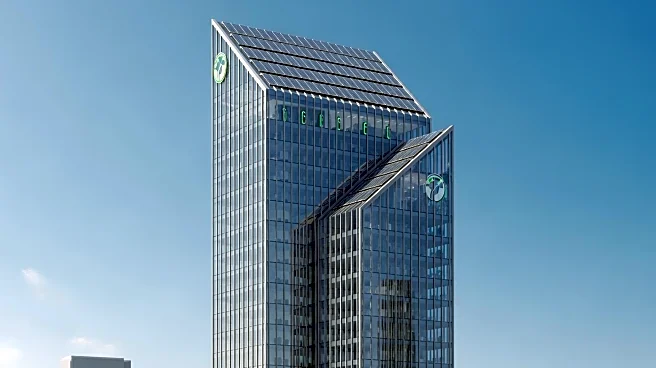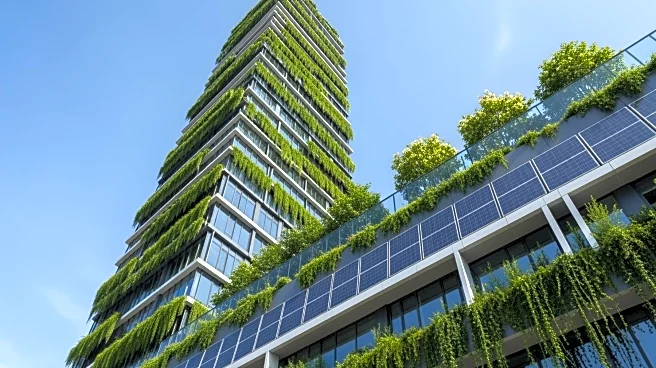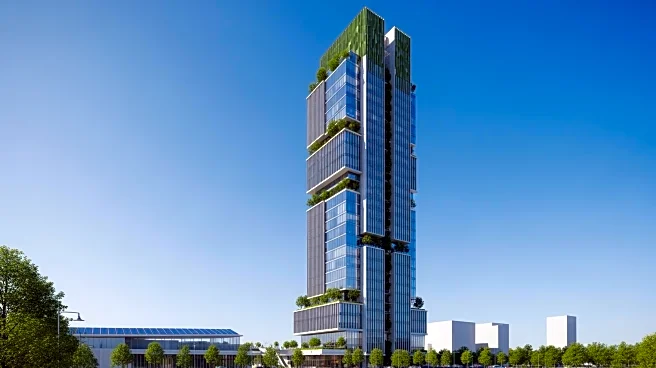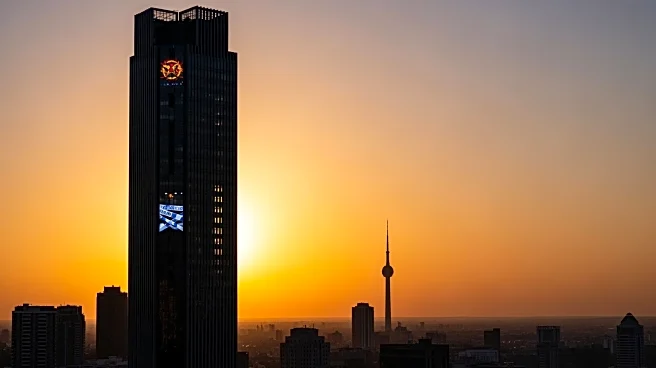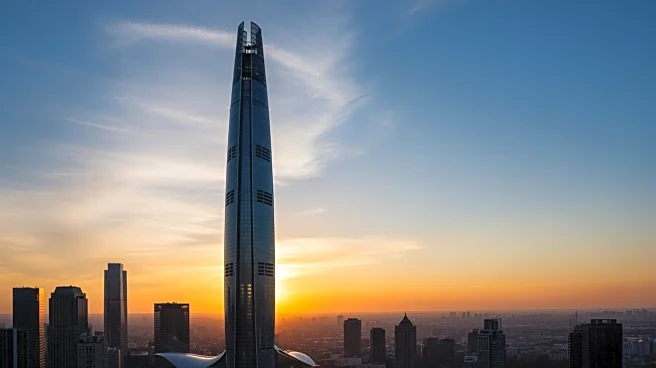What's Happening?
JPMorganChase has officially opened its new global headquarters at 270 Park Avenue in New York City. Designed by Foster + Partners, the skyscraper stands as the city's largest all-electric tower, reaching
1,388 feet in height. The building is powered entirely by renewable energy and aims to achieve net-zero operational emissions. The design features an 80-foot-high base supported by fan-shaped columns, allowing for open sightlines and a public plaza. The interior includes a double-height lobby, expansive trading floors, and a communal hub known as the Exchange. The building emphasizes sustainability with features like triple-pane glazing and a circadian lighting system.
Why It's Important?
The opening of JPMorganChase's new headquarters marks a significant step in sustainable architecture and corporate responsibility. By committing to an all-electric, net-zero emissions building, JPMorganChase sets a precedent for other corporations to follow in reducing their carbon footprint. This development could influence future urban planning and construction practices, encouraging the integration of renewable energy and sustainable design in major projects. The building's design also reflects a shift towards creating workspaces that prioritize employee well-being and environmental health, potentially impacting workplace standards across industries.
What's Next?
As the headquarters becomes fully operational, it will be interesting to observe how the building's sustainable features perform in practice. The success of this project could lead to similar initiatives by other corporations, further promoting the adoption of green building practices. Additionally, the building's impact on the local community and its integration into the urban landscape will be closely watched. Stakeholders, including environmental groups and city planners, may use this project as a case study for future developments.
Beyond the Headlines
The design and construction of JPMorganChase's headquarters highlight the growing importance of sustainability in corporate strategy. This project not only addresses environmental concerns but also reflects a broader cultural shift towards responsible business practices. The emphasis on creating a healthy work environment aligns with increasing awareness of the impact of workplace design on employee productivity and satisfaction. As more companies adopt similar approaches, there could be long-term shifts in how corporate real estate is developed and managed.
